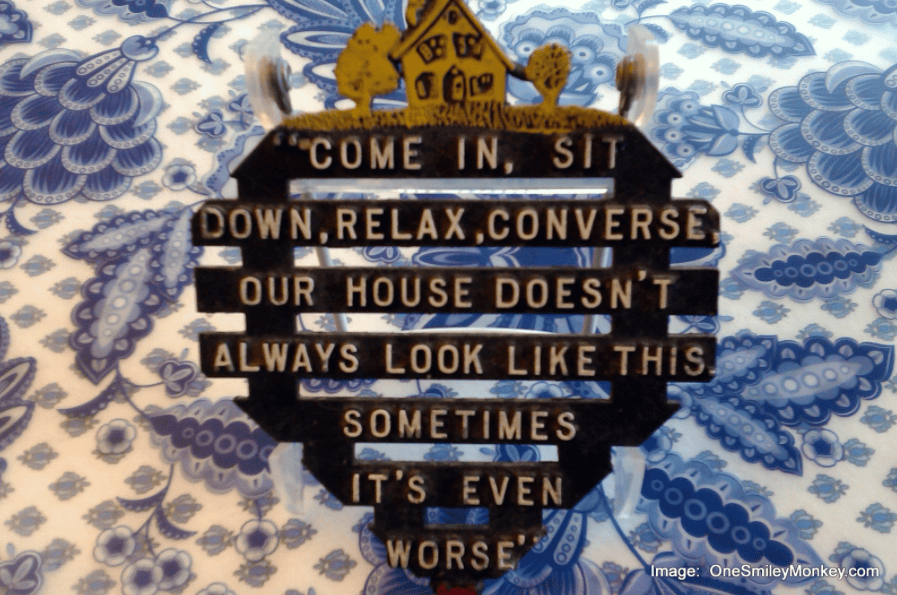
By Contributor Pamela Chan.
If you’ve ever heard friends or colleagues discuss what [self described] clean freaks they are – how they wipe down their kitchen cupboard knobs every night – I have two words of advice for you. Tune out! These types of stories will only cause you undue stress. It’s much better for you to tune into the conversations that run something like this:
“My home hasn’t been truly tidy since before my children were born.”
“I’m with you on that one. I’ve stopped doing housework.”
Most people don’t stop doing housework. There’s probably a touch of exaggeration going on in these exchanges; however, most of us do struggle to tame the chaos in our homes. How often do the people you know talk about house keeping? What we do share in person isn’t focussed on such a mundane topic. Online we’re more apt to share our holiday photos, or a viral post about Miley Cyrus bending over, than honest tidbits about cleaning fatigue.
In practice there are three stages of tidiness in homes:
- the everyday reality;
- the partially tidy version for when guests visit; and,
- the full-on overhaul when realtors, prospective buyers and inquiring family members drop by.
If we want to be really honest, even stage three can involve some tricks to feign cleaning perfection.
Here are a few strategies that my husband and I use at our house to keep one of those reality TV “let’s clean up your home” crews from showing up at our door.
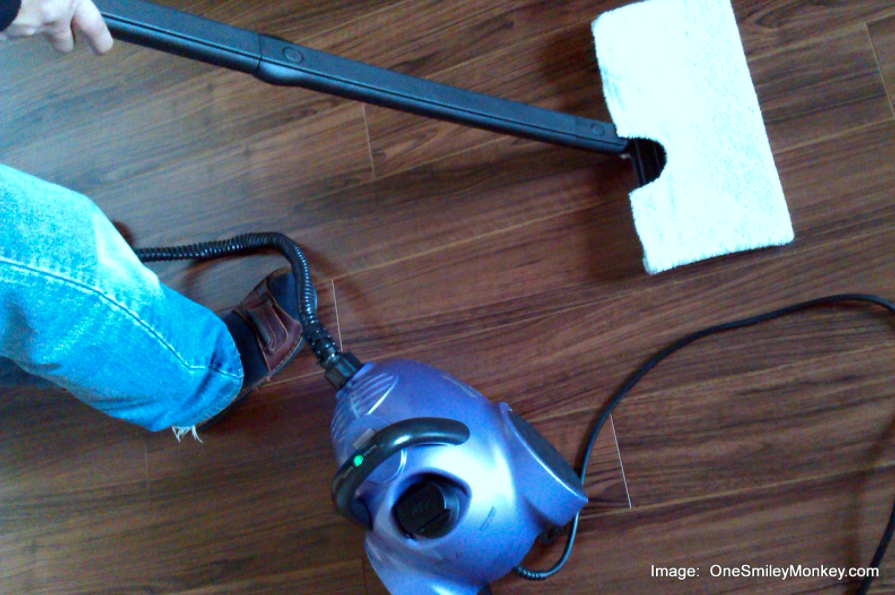
1. Divide and Conquer
It’s important to do the tasks each of us doesn’t mind doing repeatedly. If you don’t mind dealing with recycling, cleaning garbage cans, ripping out weeds, doing laundry every day and cooking, for example, you can leave your partner to steam clean, vacuum, wash the car and clean up after dinner. (I’m grouping together activities that my husband and I tend to pick up.) This is an important strategy to work out as there are many arguments taking place in households over cleaning job allocations. In many families, wives are still picking up the majority of the household tasks, whether or not they work outside of the home.
If your partner isn’t keen on cleaning, encourage tasks that he/she likes and talk about how frequently they should be done. If the tasks your partner chooses are ones you don’t like, all the better. Claim the jobs you like for yourself. Also claim the ones your partner dislikes but you can endure. If there aren’t enough willing people around, or if your energy is flagging regularly due to all of your other obligations, consider hiring a housekeeper to help with the heavy duty cleaning.
My husband pitched in on cooking meals when I was on four month bed rest. I like to joke that it’s a traumatic event that he has somehow blocked out. He can’t remember anything about it. (This was only four years ago.) I don’t expect him to cook our meals, although he does make simple breakfasts and the odd sandwich when the rest of us aren’t around.
2. Find a Home for Everything
“You know how everything in your home has a place?”, a relative said to me recently, as she continued to discuss another topic. “Woa, I thought. This is good because I do aspire to have everything back in its place. (Just like my mum does.) But most of the time I feel like we’re just not there.” Of course we’re not doing too bad in that respect.
For everything to have its place, you have to establish a set place for each object in your home. Everyone needs to understand where that object lives. Sometimes I will find my husband standing in the family room trying to figure out where the blue bunny goes or the little game piece he just found. Our family room is anything but minimalistic. There are shelves and baskets everywhere – and everything has a specific home.
3. Get Everything Back in Its Place
If objects don’t end up in their home after a day or so, they start to pile up in other places. Before you know it you have a bit of “not so organized” confusion. My mother does a complete sweep of the main floor before going to bed. If you are a guest (like my family members are), she will pick up anything you’ve left lying about and deposit it discreetly on the floor near your door. We find the objects and put them back into their temporary homes.
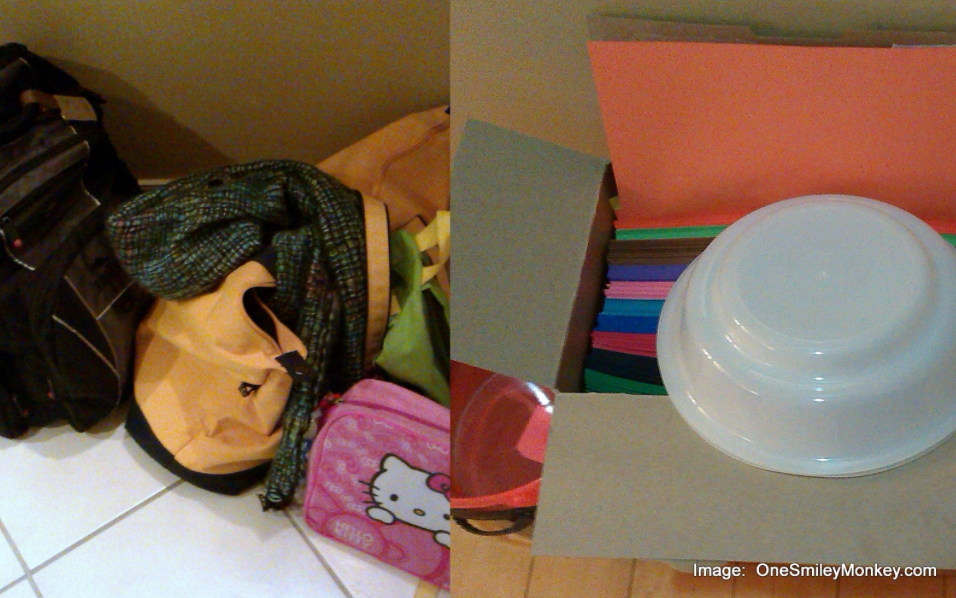
We have gathering stations where we collect objects that are on their way back to their resting place. When we come into the house after being away, with our hands full of bags, backpacks and personal bags go into a space in the foyer and items for the kitchen go directly to the kitchen island. Rather than running around the house with smaller collections of goods, we grab large groups of items and take them to another floor where we walk around putting them all away. If an item stays in a holding area for too long, chances are it doesn’t have an established home yet and my brain is resisting this fact. Or I’m just being lazy!
Whenever you are moving in your space – even if it’s just from the living room to the end of your condo – make sure that you are using your hands to bring things back to their home. Take advantage of each trip around your house. These actions become second nature and you don’t feel like you’re cleaning up.
4. Cut Yourself Some Slack
If you’re looking at your laundry and thinking “yikes, I just don’t have the motivation to fold this and put it away”, stack it all like Mt. K2 in the corner of your bedroom on a chair and close your bedroom door. If possible, try to set some time before going bed to fold it up and put it away. At our home the children’s clothes are often folded at night and stacked just outside their doors. The next day I might put the clothes away in the morning. Or it might not be until they are lying in bed and I’m slotting items away. My four year olds help with stuffing the washing machine and pulling clothes out of the dryer but I’m the official clothes put-er away-er. (I have their items groups by colour, style, function and type of fabric.) I talk a lot about what I’m doing and why it’s important while I’m doing it. I’m trying to lay a groundwork in their mind that keeping a tidy home matters. They might go through a messy phase in their teens and early 20s, but I have observed that when people start their own families they tend to resort to standards that they knew growing up.
5. Build in Infrastructure
The more free standing shelving, built-in shelving, baskets and re-purposed containers you have in your home, the easier your life will be. We have found that using a closet designer has been a critical decision – both in a condo and in a home. We have also been fortunate to pick up cheaper pieces of furniture and organizing units on sale new and second hand. On the main floor the most critical area to have built in shelving is the pantry or food storage area. If your budget doesn’t permit buying anything right now, do whatever you need to do to have infrastructure ready to accept your household goods. One PhD student I know built shelving from wooden planks and concrete blocks. Don’t forget that you can shop your home to find items that you can sell on second hand goods sites. You can then invest the money into new purchases.
6. Have the Toys and Tools
We use a steam cleaner on our floor, a European broom and vacuum cleaner and have
been experimenting with environmental cleaners. Recently I have started to rethink how I tackle bathrooms as this is not a task that I enjoy. Cleaning with toxic smelling items is not only a turn-off but is clearly polluting the ground water around our homes. If your tools are harsh, deficient, scanky and unsatisfying to use, you will avoid cleaning.
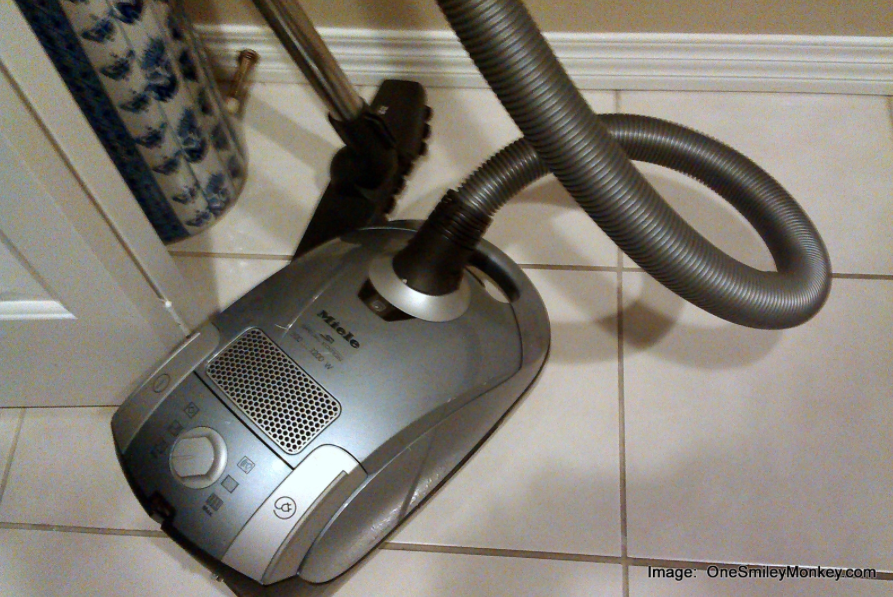
7. Make your Tools and Toys Accessible
One of the most important closets to organize is the one that holds all your cleaning supplies. One option is to keep larger items like the vacuum cleaner tucked away in a well design cupboard. At our home we leave our compact sized vacuum cleaner out 24/7 near our less used front door. It may seem odd to have this “decorative piece” on the floor but having it easily accessible means that we will use it more often. You know the old adage about sight, the mind and the related call to action.
8. Clear Out a Calm Zone
Some days it feels like I’m re-cleaning the kitchen multiple times a day. My husband says that he is doing this also. Imagine what the kitchen would look like if one or both of us stopped cleaning it! Other days I’m running out the door and don’t have time to empty the dishwasher.
Sometimes just grouping all the dishes to be washed in one corner and sink, while clearing off and wiping down the island and other counters makes me feel that the kitchen is almost done. The eating table is kept clear and ready for other uses such as arts and crafts.
A critical part of keeping a calm feeling in the kitchen is to have a clean and organized fridge and countertops that are clear of clutter. This is where built in shelving and only keeping out well used appliances helps.
9. Keep High Traffic Surfaces Clean
- toilets
- kitchen and bathroom sinks
- fridge and appliance doors
- kitchen garbage can
- stove tops
- crumb-free floors
- dust free surfaces
Tackling these surfaces regularly – and in some cases daily – will help to tame the chaos. If you can’t get to all of these tasks, choose tasks that you are willing to let slide. At our home dusting is a last priority. It won’t build up to a scary degree but sometimes it is overdue by the time I get to it.
10. Focus Your Tasks
When I do get to dusting, I dust the whole house all at once – even the baseboards and tops of hanging pictures. Do one task across your whole house instead of burning yourself out trying to clean your home in a blitz. Put your cleaning cloths and glass cleaning liquid bottle in a basket, walk around the house and tackle as many windows as you can. If you’re in a bathroom cleaning mode, keep going for as long as you can. You have to grab that momentum when it hits you.
11. Do a Nightly Reset
Try to reset your high traffic areas before you sit down in the evening for a touch of TV or other past times. As much as possible, reset these spaces to a high standard so that you don’t wake up the next day facing a mess. At our home the important reset space is the kitchen. My mother used to entertain a lot when she worked for the Foreign Service and maintained that the kitchen should be finished before bedtime. This led to many late nights with all four of my family members working hard to reset the house after one of our many weekly large dinner and cocktail parties.
12. Go Albertan
It’s not just people from Asian countries who remove their shoes at the door. If you have spent time in rural Alberta you’ll know that homes there include a mud room where all footwear comes off before you enter. One recent finding puts 65% of pathogens in your home originating from your outdoor shoes coming into the house. Don’t forget the impact of dirt, grass and bits of mud that can come into your ground floor and carpets. Make life easy and keep that footwear at your home’s threshold. We take off muddy boots before climbing into the car and put them in a box in the trunk. A clean (ish) car is an extension of a clean home.
13. Befriend Your Dryer
If you do have unexpected guests, shove everything that’s making your main area look messy into the dryer. When we showed our condo for the better part of a year while our twins were babies and toddlers, this is what we did.
14. Organize Your Storage Room
The more organized your storage room is – with shelving and neatly stacked boxes- the less likely you are to stuff it full of junk. In order to keep your home tidy, your storage area needs to be ready to receive items that you don’t need year round and 24/7. Some examples include Christmas wrap and decorations, items you need to resell, seasonal items such as picnic baskets and hand-me-down clothing that you are waiting to give to your children.
15. Follow the Experts
The experts of all experts, when it comes to cleaning, organizing and embracing the art of living, are Martha Stewart and her colleagues. Her website and Martha Stewart Living magazine are a treasure trove of great organizational and cleaning ideas. Other interior design magazines offer similar advice. Don’t be intimidated by Pinterest where many people are pinning organizational and cleaning tips. It doesn’t mean that they are doing all or even most of them. Their efforts will lead you to some nifty ideas on personal weblogs via pins. If you know a particularly fastidious house cleaner who is using Pinterest, follow his or her Pinterest account! While you are looking for inspiration, seek out online publishers who are sharing information about eco-friendly cleaning alternatives. If cleaning a home coincides with ethical and sustainable choices, you will feel more inspired.
If the thought of attacking cleaning tasks puts you in a bad mood, dwell on the topic even more. Get yourself into a really bad state and then take action. This is when you will do your best cleaning and organizing. Grab garbage bags and boxes to collect items to store, put away, give away and sell. If you’re having one of those days when you feel like you’re not getting things done, or you’re being hard on yourself about how you’re faring in one of your life roles, a round of cleaning in a high traffic room will bear results that will leave you feeling satisfied. If you really want to feel like you’re getting down to it, reorganize your bureau in your bedroom or your kitchen pantry or food shelving.
There are many more general cleaning tips out there that can help tame the chaos. What strategies do you use in your home? Do you tackle the chaos on your own, with the help of someone else or do you hire a housekeeper?
Related
User generated quotes about cleaning on Somee. Enjoy!
Pamela Chan lives in the Tri Cities area near Vancouver with her husband and four year old twins. They enjoy exploring cultural events and scenic local parks. On BCfamily.ca she writes about ideas that strengthen our communities and celebrate multiculturalism in British Columbia.


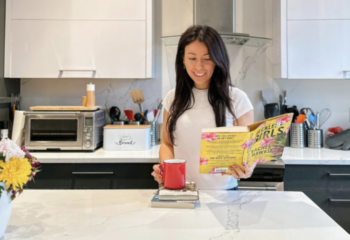

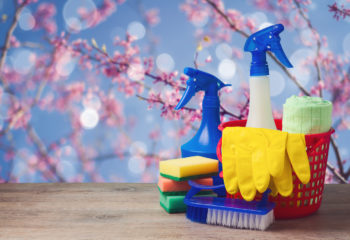




58 Comments on “15 Cleaning Tips to Help Tame the Chaos”
Great tips!
Wow..I am definitely that person who has a place for everything. It drives my hubby crazy. He doesn’t like doing the chores and though I moved to Alberta, we’ve always taken off our boots and shoes! We are not even a month into our new place (it’s bigger) but I am still thinking of ways to organize and be compact….I’m used to living in a condo! Bigger places = more to clean….yikes. I may need to hire a cleaner from time to time especially with an active toddler!
GREAT tips!! I clean my house constantly and daily. I always clean the high trafic areas daily too. I am a bit of a clean freak, maybe close to OCD, but I can’t stand having a messy house, the only thing I leave out are my kids toys, which get all picked up twice a day, at nap time and bed time. When you have kids, it is hard to keep a clean house, but it is something that you just have to stay on top of. When we had our house for sale, my house was spotless, so glad its not for sale now so I can relax a bit. Awesome tips though, I guess I am doing a good job!!
Those are fabulous tips to stay on top of the chaos.
great tips!\
This is my downfall – keeping everything tidy and organized. I feel if I could just “find a home for everything” – that I could start to get a handle on this. But there’s way more stuff here than there is really room for – I don’t know WHERE to start to downsize. I am overwhelmed! This is an apartment, with no mudroom, basement, attic…..OMG!!
I love the divide and conquer tip! My husband and I always work together to keep the house clean. One person can’t do it all by themselves.
I think ‘Find a home for everything’ is important to keeping a house tidy. This way, you should be able to find what you need, when you need it. I am going to concentrate on this one for a while before I progress furthur.
I always make a list of things to do and cross them off when finished
Get everything back in place- No 2 won’t work unless we concentrate on this one as well. I am making progress in finding a place for everything and also being careful to return objects to where they belong. I really love these tips.
Taming the Chaos-Cut yourself some slack. This can be difficult to do, especially if you have some project on like yard work or gardening. I have learned to do it in a series of segments so I won’t be totally exhausted at the end of the day. I feel much better when \i pace myself and so will you.
Build in Infrastructure[[- More and more I realize how important this is and, in the past few years, I have bought and used more containers for storing clothes, gifts, yarn and other items that are not frequently used.
This has certainly helped with the clutter problem and I am looking at more ways to get rid of items that are not longer used..
I really enjoy your tips and I am working my way through them. /Thank you for them.
Tame the Chaos-Have the Toys and Tools.
It is true that any distasteful task is easier when you have the proper equipment and the task is easier when some of the distasteful ;part of the job is made easier, faster and more efficient.
Tame the Chaos-no.8-Clean out a calm zone:
I don’t have small children in my home on a regular basis but my grand and greatgrandchildren visit and I love to have them visit us.
However, I know what you mean by a calm zone. We tend to have more company in the summer, some expected -some not.
It is reassuring to have a tidy house when company comes and for our own comfort . Thank you for this tip. I am applying them to tame my chaos!
Tame the Chaos-no.9.-Keep High Traffic Areas Clean.
I’m glad you put dusting last because, at our place, this is the last must-do chore for me and the others I try to keep up with dailyy or almost daily. I
Tame the Chaos-no.10- Focus your Tasks.–I usually dust one or two rooms at a time but I think your method would probably see more dusting, etc., done at one time and the house would be that much closer to being clean. Thank you for these tips. I am learning a lot.
There is much merit in your Mother’s attempt to bring the house back to its normal tidy state.
I have been trying harder to clean and tidy up our kitchen and family room every night because it is a treat to the eye to wake up to a reasonably clean and tidy kitchen and family room. it is worth the time and effort to do so the night beforel(no.11)
Tame the Chaos; Go Albertan-no.12–This may be easier for my family now.. My husband farmed for years and many times he was in and out of the house many times a day and he did not want to unlace and lace up his work boots with a group of men waiting for instructions out in the field.
Now that we are are ‘retired’ (he is, I’m not!), I do not have this problem anymore. I am home and enjoy being a homemaker after a few years being a substitute teacher, going back to school to get my stenography and bookkeeping certificates and then working for a Community College and Revenue Canada.
I enjoy baking for my grand and great grand children, especially chocolate Chip cookies and enjoying visits from family and friends.
Tame the Chaos-no.13–Befriend Your Dryer.
This is a simple and unique (to me) way t o ‘tidy up’ in a hurry. I know with babies and or toddlers on the scene, chaos can happen very quickly.
‘While I never thought of my dryer, I was really good at stuffing things in unusual places.
Organize your Storage Room. –This is a difficult one for me. My storage room doubles as a library, sewing room, place to store my knitting and my knitting supplies, Computer room and guest room (on /Occasion). I am working on this room. It is the last room my home to be organized by me and it is a long process. I hope to persevere!
Tame the Chaos-no 15-Follow the Experts.
I agree with you that Martha Stewart is probably the ‘Queen of Clean,’ but gets by with 4 or so hours of Sleep a night. I do not think I could ever keep up to her energy level ever!
I love her housekeeping tips and follow her show occasionally. I do have a housekeeper except myself and I don’t think that will change anytime soon. I do agree with you that there are other experts and they do give excellent tips and I do try these tips out when I can. Thank you for all these tips. If followed faithfully, they would certainly ‘tame the chaos,;
make is list of things to do and cross them off once completed, this works for me
Great motivator!
I think it is time hubby and I downsized, it is hard to keep up a cleaning routine, we have a 2 story 4 bedroom and it is only us and the dog
It’s a wonderful feeling to come into the kitchen in the morning and the counters are clear and clean. …no dirty dishes in sight.
I tackle all the chaos in my house on my own. I am also a cleaner for some other ladies in my city. I always like reading cleaning tips.
These are great cleaning tips
Great tips! We have a small apt and it gets cluttered very easily if we don’t stay on top of the cleaning. I love reading cleaning tips! Thanks 🙂
lol when the grandkids visit its hard to stay on top of the chaos
Well next month it will be time to put these tips into action
This is great! I think the most useful one for us is making sure everything has a home (even if my husband doesn’t know where it is most of the time).
Another important tip that has helped us is this: if we find that we are moving something from room to room and can’t find a permanent home for it, we should consider if we really need it (IE: everytime I’m organizing and cleaning I’m asking myself “Is this item used regularly? do we need it? Can I live without it?” the more things I get rid of, the less I have to organize and clean! Simplify is our word for this year.
My pet peeve is dirty dishes in the morning,thanks for the tips
Time to start getting these tips in to action
I find everything has to have a place to keep things tidy
Tip #9 is one I will really take to heart. I tend to clean by rooms but I can really see the value of taking care of the main traffic areas most frequently.
I only keep in my home what we need,i dont like things dragging around
These are great tips, thanks for the great ideas I would never of thought of some of these ideas but they make sense
The wall hanger with the verse at the top,i remember going to my grandmas when i was young and she had something like this in her kitchen
These are great tips to stay ontop of things
If you do a bit everyday it does not pile up….and everyone has to help in some way
I really enjoy your tips..we are in the process of cleaning our basement and getting rid of stuff
I read somewhere taht there was a Quaker idea for maintaining order where you have a few stations in the house and you put things there (like linens or books) and any person living in the house passing the station must take the thing and move it on to its rightful place. I have yet to institute this, but it make sense. I like your sign though!
Thanks for all these great tips.I enjoy cleaning and living in a clean house.It is usually clean but sometimes it can be messy especially if my grandchildren have been over.
Thanks for tips. I do keep high traffic areas clean and always put stuff back.
I like to read this post every once in a while to keep up my efforts to keep our home reasonably clean and tidy. Sometimes it seems that we have visitors only when the house seems to be untidy due to illness or other events. Reading this post helps to keep me focused on trying to keep our home tidy while still having time to bake, read and knit. Thank you for these informative and encouraging posts.
Finding a home for everything is such an important part of taming the chaos. Every once in awhile we end up with random piles of things laying around because we don’t have a place for them yet..
Thank you for the great tips. A place for everything and everything in its place my moms advice and I follow this …
I try to keep up with laundry which I love doing. Since my husband has been diagnosed with Parkinsons, I spend time helping him with bathing, dressing and medications.
I find time to clean and vacuum and keep up the housecleaning. I am happy that my husband is able to be at home with me.
Great tips! We are still in the early phases of purging, organizing and finding homes for everything. I will be keeping these in mind for sure! 🙂
I would love to have a steam cleaner so I could sterilize everything
Great tips! I do my own housekeeping and for me, organization is key to keeping it tidy.
Great tips but I personally would love a “let’s clean up your home” crew come in once a week, just without a TV show attached,LOL
We bought a dyson stick vacuum for quick cleanups and love it.
All great tips, I try to tackle one room at a time, and because of my bad back it can take me sometime to finish
The finding a place for everything makes such a huge difference. We’re working on this now and it’s already had an impact!
Finding a place for everything and doing an evening reset are two things I want to work on.
Great cleaning tips. Thanks for sharing.
These are all great ideas. Chaos just seems to happen.